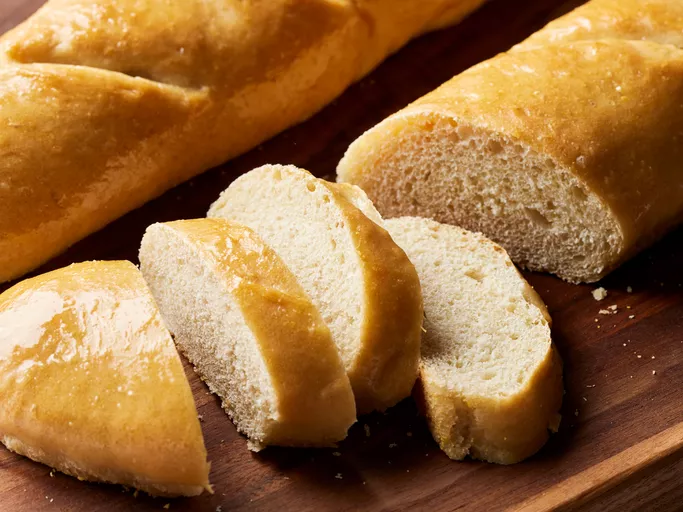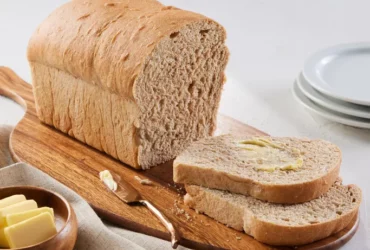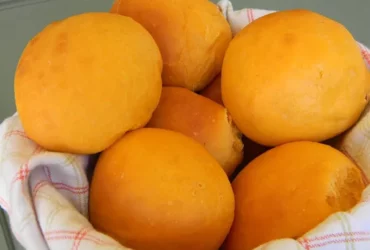Ingredients
The Right Flour: Bread flour, also known as Type 55 or All-Purpose flour, is a must-have in French baking.
The right flour is essential for making authentic French bread, and bread flour, also known as Type 55 or All-Purpose flour, is a staple ingredient in French baking.
Bread flour has a higher protein content compared to all-purpose flour, which makes it ideal for creating the chewy, tender crumb and crispy crust that characterizes traditional French bread.
The high protein content in bread flour also helps to create gluten, a network of proteins that gives bread its structure and texture. This is particularly important when making bread that requires a lot of rise, such as baguettes or boules.
Key Characteristics of Bread Flour
- Protein Content: Typically contains between 12-14% protein content, which helps to create strong gluten and structure in the dough.
- Bleaching or Unbleached: Bread flour may be either bleached or unbleached. Bleached flours have been treated with oxidizing agents to improve their color and strength, while unbleached flours retain a more natural appearance.
- Fineness of Grind: Fine, medium, or coarse grind options are available. A finer grind will produce a tenderer crumb, while a coarser grind will result in a chewier texture.
When shopping for bread flour, look for the following labels:
- Type 55: This is a French classification that refers to high-protein flours with at least 12.5% protein content.
- Bread Flour (T45 or All-Purpose): This type of flour has a slightly lower protein content than Type 55, but still offers good structure and rise for bread.
Remember that different regions may have their own specific types of flour, so it’s essential to familiarize yourself with local options and adjust your recipe accordingly.
The Power of Salt: Unrefined sea salt enhances the flavor and texture of the bread, reducing its acidity.
The choice of ingredients plays a crucial role in shaping the taste, texture, and overall character of any culinary creation, and this holds especially true for traditional French bread. When it comes to unleashing the full potential of a French bread recipe, one ingredient stands out as a game-changer: unrefined sea salt.
Unlike the finer, more processed table salts commonly used in cooking, unrefined sea salt is prized for its coarse texture and robust flavor profile. This unique characteristic makes it an ideal choice for enhancing the flavors and textures of bread, particularly when it comes to achieving a perfectly balanced French loaf.
The acidity reduction that occurs due to the use of unrefined sea salt is a significant aspect of its power in bread-making. The coarser crystals found in this type of salt are less likely to dissolve quickly into the dough during the mixing process, which can lead to an over-acidic environment and ultimately result in poor rising or unpleasant flavors.
As the unrefined sea salt works through the dough, it helps to balance out the natural acidity present in other ingredients like yeast, flour, and water. This subtle adjustment contributes significantly to a bread’s overall character, allowing its true flavor potential to shine through in every bite.
In addition to reducing acidity, the coarser texture of unrefined sea salt also enhances the crumb and crust structure of the finished loaf. The larger crystals provide more surface area for the yeast to feed on during fermentation, resulting in a lighter, airier interior with an appealing crunch in the crust.
When incorporating unrefined sea salt into your French bread recipe, remember that less can be more. Start by adding just a pinch or two and observe how it affects the dough’s behavior and final texture. Gradually increase the amount as needed to find the perfect balance for your taste buds.
The next time you embark on baking traditional French bread, consider giving unrefined sea salt a try. Its unique flavor-enhancing properties and acidity-reducing abilities will undoubtedly elevate your creations to new heights of culinary excellence.
Instructions
Step 1: Mixing the Dough – Combine yeast, water, sugar, and a small amount of flour to create the initial fermentation stage.
To begin creating the perfect French bread, it’s crucial to understand the importance of the initial fermentation stage, also known as the “sponge” step.
This process involves combining yeast, water, sugar, and a small amount of flour in a specific ratio to create the foundation for the dough’s development.
Here are the key components involved in Mixing the Dough:
Yeast
A teaspoon or two of active dry yeast is added to the mixture. Yeast fermentation is responsible for producing carbon dioxide gas bubbles, which contribute to the bread’s rise and texture.
Water
About 1 cup (240 ml) of lukewarm water (around 100°F/38°C) is incorporated into the mix. The temperature should be warm enough to activate yeast activity but not hot enough to kill the yeast or scald the dough.
Sugar
A small amount, approximately 1 teaspoon, of granulated sugar is added to feed the yeast and promote fermentation. This encourages the yeast cells to multiply rapidly, contributing to the dough’s rise.
Flour
A tablespoon or two (15-30 grams) of bread flour is included in this initial mix, providing a small amount of gluten development, which will help strengthen the dough as it progresses through fermentation and proofing stages.
The key to successfully creating this initial mixture lies in using lukewarm water and allowing the yeast enough time to activate. Typically, the mixture is left at room temperature (about 75°F or 24°C) for a few hours until the dough starts showing signs of fermentation, such as foam or bubbles on its surface.
After this step, proceed with adding more flour and ingredients as instructed in Step 2: Kneading the Dough to complete the bread-making process.
Please note that specific ingredient measurements and temperatures may need adjustments based on personal preference and local climate conditions. However, adhering to the outlined steps will guide you through creating a high-quality French bread recipe.
Step 2: Adding Ingredients – Gradually incorporate remaining ingredients while ensuring proper hydration and mixing techniques.
In this step, you will gradually incorporate the remaining ingredients to ensure that your dough develops the necessary structure and texture for a delicious French bread.
To accomplish this, follow these steps:
- Add Flour in Three Installments
- Begin by adding 2 cups of flour (reserving 1 cup for later use) to the mixing bowl containing your yeast mixture and water combination.
- Mix the ingredients at low speed until a shaggy dough forms.
- Add Salt and Sugar
- Gradually add salt and sugar to the dough, ensuring that they are evenly distributed throughout the mixture.
- Continue mixing at low speed until the dough begins to come together in a cohesive mass.
- Add Remaining Flour and Mix Thoroughly
- Add the remaining 1 cup of flour (reserved from earlier) to the dough and mix until it is fully incorporated.
- Gradually increase mixing speed as necessary, taking care not to overmix the dough.
- Ensure Proper Hydration
- Check the dough for proper hydration by performing a touch test: gently press your finger into the dough to determine its consistency and pliability.
- Adjust the hydration level as needed, adding more water or flour to achieve a smooth, elastic texture.
- Mix and Knead for 10-15 Minutes
- Continue mixing and kneading the dough for an additional 10-15 minutes, focusing on developing the gluten structure and achieving a smooth, shiny surface.
- Be mindful of overmixing, which can result in a dense or tough bread.
Step 3: Final Fermentation – Allow the dough to rest for several hours, giving yeast ample time to ferment.
To complete the final stage of fermentation, follow these steps for a successful Final Fermentation.
Step 1: Place the dough in a lightly oiled bowl, allowing it to rise in a warm, draft-free environment.
Step 2: Cover the bowl with plastic wrap or a damp cloth to maintain humidity and prevent drying out.
Fermentation Time:
The length of time required for fermentation may vary depending on factors such as yeast activity, dough temperature, and environmental conditions. As a general guideline:
- For a cool environment (around 68°F/20°C), allow the dough to rest for 3-4 hours.
- For a moderate environment (around 75°F/24°C), allow the dough to rest for 2-3 hours.
- For a warm environment (around 80°F/27°C) or during hot summer months, allow the dough to rest for only 1-2 hours.
During this time, the yeast will continue to convert sugars into carbon dioxide gas, causing the dough to rise and develop its characteristic flavor and texture.
Keep in mind that over-proofing can lead to a dense or flat loaf. Monitor the dough’s progress closely and be prepared to intervene if necessary.
Tips and Variations
Creating Texture: A ‘pre-ferment’ stage using a mixture of flour, water, and sometimes yeast can create an airy texture in French bread.
The art of creating a delicate, airy texture in French bread lies in the ‘pre-ferment’ stage, where a mixture of flour, water, and sometimes yeast is allowed to ferment.
This process, also known as autolyse, involves mixing the ingredients together without any added yeast or other leavening agents, allowing the natural enzymes present in the flour to break down the starches into sugars, creating a naturally occurring fermentation.
The autolyse stage is typically carried out for 20-30 minutes, depending on the type of flour used and the desired level of enzymatic activity. During this time, the mixture will start to break down and release its natural enzymes, creating a more complex flavor profile.
One key factor in achieving the perfect autolyse is the ratio of water to flour. Using too much water can result in a dense, soggy bread, while using too little water can lead to a dry, crumbly texture. A general rule of thumb is to use a hydration percentage of around 60-70%, although this can vary depending on the specific recipe.
Some recipes may also include yeast or other leavening agents in the autolyse mixture. This will help to create a lighter, airier texture, but be careful not to overdo it – too much yeast can result in an overly aerated bread that collapses during baking.
Another variation on the autolyse technique is to use a biga or pâte fermentée, where a small amount of dough is allowed to ferment before being added back into the main mixture. This will create a more complex flavor profile and help to develop the gluten in the flour, resulting in a chewier, more rustic texture.
In summary, creating texture through the autolyse stage is all about balance and control. By mastering the art of mixing flour, water, and yeast together, you can achieve a delicate, airy texture that’s characteristic of traditional French bread.
Cultivating Flavor: Add flavor enhancers like herbs, spices, or nuts to create unique variations while maintaining traditional techniques.
Cultivating Flavor in French Bread Recipe
The art of baking French bread lies not only in its traditional techniques but also in the ability to infuse flavors and textures that elevate it to a new level. This is achieved through the strategic use of herbs, spices, nuts, and other flavor enhancers that add depth and complexity without deviating from the fundamental principles.
Herbs are an excellent choice for adding flavor to French bread, with popular options including:
- Fresh rosemary leaves for a classic Provence-inspired flavor
- Fresh thyme sprigs for a savory and slightly minty taste
- Parsley or dill for a fresh and herbaceous note
Spices can add warmth, depth, and heat to French bread. Try incorporating:
- Sesame seeds for added nutty flavor and crunchy texture
- Fleur de sel for its rich, mineral-rich flavor
- Ginger powder or grated ginger for a spicy kick
- Cinnamon sticks or ground cinnamon for a warm, sweet flavor
Nuts can bring an added crunch and nutty flavor to French bread. Popular options include:
- Walnuts for their rich, earthy taste and satisfying texture
- Pecans for a smooth, buttery flavor and crunchy bite
- Hazelnuts or filberts for their distinctive nutty aroma and flavor
Cheese can be an excellent addition to French bread, especially when melted. Some popular cheese options include:
- Chèvre (goat cheese) for its creamy texture and tangy taste
- Gruyère or Emmental for their rich, nutty flavors and smooth textures
- Blue cheese like Roquefort or Gorgonzola for a pungent, savory flavor
When incorporating these flavor enhancers into your French bread recipe, remember to maintain the traditional techniques that make it so iconic. This includes using high-quality ingredients, allowing for proper fermentation and proofing time, and baking in a hot oven with steam.
The possibilities are endless when it comes to creating unique variations of French bread while maintaining its traditional essence. By experimenting with different herbs, spices, nuts, and cheese, you can create a wide range of flavors that cater to various tastes and dietary needs.
- Best Dun & Bradstreet (DNB) Alternatives for 2025 - April 24, 2025
- Best Seamless.ai Alternatives for 2025 - April 22, 2025
- Best Coldlytics Alternatives for 2025 - April 22, 2025















